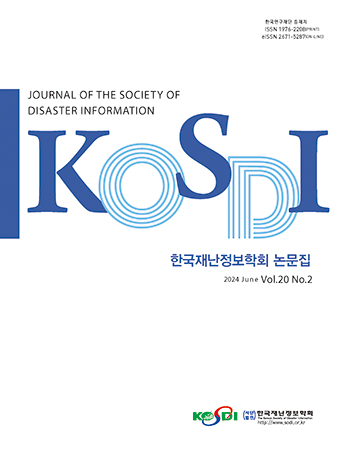Original Article
Abstract
References
Information
Purpose: Greenhouse gases are known to be the major factor that accelerates global warming. This study analyzes the effects of the GHG reduction policy in the highway sections and improves the method of calculating GHG emissions. Method: Using the DSRC raw data, we estimate the emissions of Namhae Expressway (Yeongam-Suncheon) from 2017 to 2019 in two ways, a macro method (conventional) and a micro method (individual vehicle). Result: As a result of calculating the emission of the highway, the result was far exceeding the estimated emission, and it was found that when the calculation was performed for each vehicle, it was underestimated by more than 20%. Conclusion: If more emissions are continuously emitted than expected in the current transportation sector, additional emission reduction policies are needed to achieve the current greenhouse gas reduction targets. In addition, in the calculation of emissions, which is the basis of this policy, analysis was conducted for each individual vehicle using the current DSRC raw data, but using GPS afterwards will enable precise emission calculation through a more microscopic analysis.
연구목적: 온실가스는 지구온난화를 앞당기는 주요 요인으로 알려져 있다. 본 연구는 고속도로 수송부문 온실가스 저감 정책의 효과를 분석하고, 온실가스 배출량 산정 방법을 개선하고자 한다.
연구방법: DSRC 원시자료를 사용해 거시적 방법(기존)과 미시적 방법(개별차량) 두 가지 방법으로 2017년부터 2019년까지의 남해고속도로(영암-순천) 배출량 산정을 진행한다. 연구결과: 고속도
로의 배출량을 산정한 결과 예측하고 있던 배출량을 훨씬 넘어선 결과가 나왔으며 개별차량별로 산정을 진행할 때 20%이상 과소추정되고 있었다는 결과가 나왔다. 결론: 현재 수송부문에서 예상
하고 있던 온실가스 배출량보다 더 많은 배출량이 지속적으로 배출될 경우 현 상태에서 온실가스 감축목표를 달성하기 위해서는 추가적인 배출량 저감정책이 필요하다. 또한 이 정책의 기본이 되는 배출량 산정에서 현재 DSRC 원시자료를 통해 개별차량별로 분석을 진행하였지만 이후 GPS를 활용하면 좀 더 미시적인 분석을 통해 정밀한 배출량 산정이 가능할 것이다.
- Chang, H.H., Choi, S.H., Yoon, B.J. (2019). "GHGs emissions based on individual vehicles speed." Journal of the Korea Society of Disaster Information, Vol. 15, No. 4, pp. 560-569.
- Hong, D.H., Jang, D.I., Lee, S.J., Kim, S.I., Park, J.Y. (2017). Study on Air Pollutant Emission Estimation Method in Transportation Section, The Korea Transport Institute.
- Joint Ministry (2018). Amendment to the Basic Roadmap for Achieving the National Greenhouse Gas Reduction Target in 2030.
- Kim, Y.S., Chang, J.H. (2001). A Study on the Role of Seoul City Govemment implementing the UN Framework Convention Climate Change. Seoul Development Institude. 2001-R-12.
- National Institute of Environmental Research (2008). Establishment of Climate Change responding System for Transportation Sector(Ⅰ). NIER, Nier 11-1480523-000361-01.
- National Institute of Environmental Research (2013). CAPSS Model National Air Pollutant Emission Estimation Manual. NIER, Nier-GP2013-097.
- Rakha, H., Aerde, M.V., Ahn, K., Trani, A.A. (2000). Requirements for Evaluating Traffic Signal Control Impacts on Energyand Emissions Based on Instantaneous Speed and Acceleration Measurements. Transportation Research Record, No. 1738, pp.56-67. 10.3141/1738-07
- Ryu, B.Y., Bae, S.H. (2012). "Estimation of greenhouse gas in the urban area by using advanced traffic management systems - Case study of Daejeon." Journal of Transport Research, Vol. 19, No. 3, pp. 119-134. 10.34143/jtr.2012.19.3.119
- Publisher :The Korean Society of Disaster Information
- Publisher(Ko) :한국재난정보학회
- Journal Title :Journal of the Society of Disaster Information
- Journal Title(Ko) :한국재난정보학회논문집
- Volume : 16
- No :4
- Pages :849-856
- DOI :https://doi.org/10.15683/kosdi.2020.12.31.849




 Journal of the Society of Disaster Information
Journal of the Society of Disaster Information







